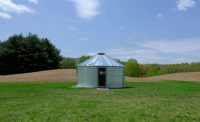A few days after Hurricane Harvey swamped Texas, Richard Florida, the urban theorist and author of The Rise of the Creative Class, rang an alarm, declaring that the “new age of the city” might be ending. He wasn’t talking about the impact of the storm but, instead, cited statistics that show some big cities are losing population, including Chicago, and some suburbs are gaining—in the Sun Belt around Charlotte, North Carolina, and Orlando, for example. There are signs, he wrote in a New York Times op-ed piece, “that the tide [of urbanization] has crested.”
But try telling that to the people of Houston, where overdevelopment has been blamed for the catastrophic flooding the city has endured, not only during Harvey but with two other calamitous floods in the last three years. Houston’s population continues to grow—it now has 2.3 million people and is on track to become the nation’s third-largest city by 2025. Miami, the other major city in a hurricane’s path this season, is also booming, with a downtown population that rose 6.5 percent every year between 2010 and 2016. When Irma whipped through last month, two of more than 20 construction cranes on the skyline toppled, both atop new multifamily structures.
Demographers may be right about a downward slide in certain cities, but urban areas remain powerful magnets. Houston has long been a big center for the construction of multifamily buildings and is slated to add about 18,000 more units this year. Miami, too, is adding new housing. While both cities face a future of even more storms—and storms of greater force, according to climate scientists—the level of destruction could be partly alleviated by better management of development. In sprawling Houston, with its notoriously nonexistent zoning laws, experts have decried the widespread paving of coastal prairie, with so much building and hardscape that stormwater has nowhere to be absorbed. In Miami, where every developer wants to build condo towers with spectacular views, the dangers of building along the shore, at or below sea level, have been obvious for some time.
Multifamily residential development has not caused, in itself, the problem for cities threatened with disastrous storms and rising sea levels, but can be part of the solution, creating greater density to house growing populations. If municipal planners and policy makers could better control where and how development occurs, housing more people on a smaller footprint would allow for more green parks, bioswales, and other public spaces designed with greater porosity. That, along with improved infrastructure, could reduce the impact of storm surges and flooding.
The challenge for architects is how to design housing for varied urban contexts and the needs and incomes of diverse populations. In this issue, we look at a range of innovative approaches, from a mixed-use complex in an upscale Washington, D.C., neighborhood that incorporates a firehouse, a squash club, and affordable apartments under one roof to a five-story residential building in the densely populated Koreatown in Los Angeles, which animates the streetscape with a facade of black and white punched-out window frames and balconies. A not-for-profit in L.A. that builds housing for the formerly homeless has constructed its first project in the suburbs, with a design that cleverly adapts to a narrow, deep lot, with a snaking series of faceted forms. And in Miami—to access those great water views—a pair of twin towers twists and turns, its unusual architecture aided by smart engineering (and, yes, it has hurricane-impact windows, a three-story podium, and a hydrostatic basement slab, all designed to withstand monster storms). In São Paulo—a city where apartment buildings tend to be fortresses against crime—a handsome new concrete high-rise subtly incorporates security measures while presenting a welcome openness to its surrounding neighborhood. And architects transforming old buildings into dwellings may well be inspired by a Swiss conversion that doesn’t cover up the original interiors but, boldly, strips them bare to create a rich backdrop for daily living.
Despite dire predictions, cities, of course, will endure and keep changing. They are still the greatest hallmarks of civilization and the engines for human creativity and enterprise. But housing is among the most urgent urban problems, one that architects must continue to explore with ever more inventive designs.





